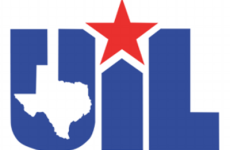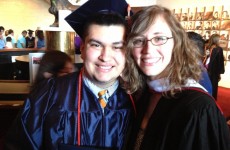At the behest of members of the Houston community, St. John’s School was founded in 1946 in coordination with the Episcopal Church of St. John the Divine. A former Assistant Dean of Students at the University of Chicago, Alan Lake Chidsey served as the school’s first headmaster when he welcomed 344 students to the school in its inaugural year. St. John’s School is no longer formally affiliated with the church. Today, St. John’s School educates over 1200 PreK-12th grade students in the heart of River Oaks.
St. John’s School
2401 Claremont Lane, Houston, TX 77019 Dr. Mark Desjardins, Headmaster
713-850-0222 Ms. Cheryl Plummer, Director of Admissions
www.SJS.org
Religious Affiliation
Originally a joint effort with the Episcopal Church of St. John’s the Divine, St. John’s is today not religiously affiliated. The chapel on campus is host to a broad range of multicultural services in addition to non-denominational Judeo-Christian services.
Location and Facilities
St. John’s approximately 30-acre campus is located in the Upper Kirby district at the edge of Houston’s prestigious and exceptionally affluent River Oaks community at the intersection of Westheimer Road and Buffalo Speedway. It is divided in the center by Westheimer Road. The Upper and Middle Schools are on the north side while the Lower School is on the south side of Westheimer. Two tunnels underneath Westheimer provide a traffic-free connection between the two halves of campus. Lamar High School is located across the street. Athletic facilities include a track and field, another multipurpose field, and a soccer/ baseball field. At the end of 2012, St. John’s acquired an additional 13 acres of land adjacent to its South Campus. It has not yet announced an intended use for this acquisition.
Admissions
The admissions process to St. John’s is very competitive. Only about 20% of applicants are given offers of admission. Admissions criteria include academic capability, personal motivation, comparative strengths, and diversity. St. John’s makes a conscious effort to admit students from all ethnic and socio-economic backgrounds. The school strongly favors community members or those who have some sort of affiliation with the school—alumni, siblings, faculty members, etc. Prospective parents would be well served by reading St. John’s detailed publication on the admissions process, “Hopes and Realities,” available on the school’s website.
Kindergarten students must be 5 years old by September 1st but not older than 6 on June 1st of their application year. Only 175 candidates are allowed to apply for kindergarten. Preference is given to families affiliated with the school followed by chronological order of application date. There are 42 openings; historically, nearly 75% of these openings have been taken by legacy children. Applying students are individually administered IQ tests and also assessed in a group setting for school readiness skills.
Approximately 22 spaces are made available for first grade. Applicants should be six years old by September 1st but no older than 7 on June 1st. The evaluation process includes a teacher recommendation, testers’ evaluations, IQ test, math achievement test, and writing sample. Legacy students historically account for 40% of the first grade openings.
The next prime entry point is sixth grade when approximately 50 spots are offered. Admissions criteria include teacher recommendations in math and English, mid-year report cards, test results from the OSLAT and ISEE, and an interview. Legacy students historically account for about 30% of sixth grade openings.
Ninth grade is the last prime entry point for St. John’s with approximately 25 spaces offered. Application criteria include math and English teacher recommendations, mid-year report cards, OLSAT and ISEE test results, an essay, and an interview. Legacy students historically account for 40% of ninth grade openings.
Academic Tracks and Curriculum
The curriculum in kindergarten through third grade is self-contained meaning that students stay in one room while the same group of teachers covers all of the subjects in the curriculum. Subject specialists start teaching language arts, history, and math beginning in fourth grade. Art, computer, library, music, physical education, science, and Spanish are always taught by specialists regardless of grade.
The Middle School curriculum begins in sixth grade and is taught only by specialized teachers. Students participate in weekly enrichment courses including newspaper, student government, music, and sports. All students must participate in daily physical education.
In the Upper School, honors and advanced classes in math and English are generally offered beginning in eleventh grade. Over 17 Advanced Placement courses are offered although not specifically in English. St. John’s offers an advanced math curriculum including courses in linear algebra, partial differential equations, differential equations, and multivariable calculus. Juniors and seniors have access to a wide array of elective classes. Juniors and seniors may also participate in independent and directed study programs whereby they are able to create their own curriculums. A pass / fail option is offered for elective classes.
The school requires 17.5 academic credits to earn a diploma; two semesters is equal to one credit: English (4), Math (3), Science (2), Foreign Language (3), Fine Arts (1), Electives (1.5).
Special Needs
No information provided.
Foreign Languages
Foreign language instruction is part of the St. John’s curriculum beginning with compulsory Spanish in Kindergarten. French, Latin, and Spanish become available in sixth grade and is part of the curriculum four times a week. Chinese is offered beginning in 9th grade. French, Latin, and Spanish are offered up to and beyond the AP level.
Arts
An integral part of the Lower School curriculum, fine arts become more diversified beginning in sixth grade where all students must take one quarter each of theatre, dance, music, and art. A full year band class becomes optional in seventh grade. The options continue to expand in eighth grade and upper school.
Only one credit of art is required for graduation from St. John’s; however, there are a wide variety of options for students to fulfill that credit including classes in photography, architecture, music theory, theatre, and even the history of rock and roll. Additionally, St. John’s has a Performing Ensembles department, which includes Handbell, Jazz Band, String, Wind, Choir, and Dance Caprice. The Theatre department put on five major productions in the 2010-2011 academic year.
Technology
St. John’s students begin visiting the computer lab in Kindergarten. Specialized computer classes start in the second grade and continue through middle school. Computer science becomes optional in the upper school with just three courses offered. Wireless internet is available throughout the school’s campus. Students are not required to bring their own laptops.
Extracurricular Activities
Students may participate in student government beginning in the Middle School. The Upper School publishes a monthly newspaper, The Review. It also publishes an annual magazine. Students can form just about any club they want if approved by the Dean of Students. Clubs are numerous and as diverse as the student body ranging from Model UN to Quiz Bowl to Spanish Club and the like.
Athletics
The school fields teams in fourteen sports: baseball, basketball, cross-country, field hockey, football, golf, lacrosse, soccer, swimming, softball, tennis, track, volleyball, and wrestling. St. John’s is a member of the Southwest Preparatory Conference.
Parent Involvement
Parents are encouraged to take part in the Parents’ Council and ‘Brown Bag’ forums. These forums promote dialogue between parents and school leadership concerning school programs, policies and procedures, as well as addressing parents’ concerns.
St. John’s Fast Facts
| Overview | |
| School Type | Independent, Coeducational |
| Religious Affiliation | None |
| Uniforms | Yes |
| Date Founded | 1946 |
| Endowment | ~$50M |
| Grades Served | K-12 |
| Enrollment | 1274 |
| Grade 12 | 128 |
| Grade 11 | 136 |
| Grade 10 | 140 |
| Grade 9 | 137 |
| Grade 8 | 113 |
| Grade 7 | 116 |
| Grade 6 | 117 |
| Grade 5 | 60 |
| Grade 4 | 60 |
| Grade 3 | 60 |
| Grade 2 | 60 |
| Grade 1 | 60 |
| Kindergarten | 42 |
| Student to Teacher Ratio | 7:1 |
| Faculty with Advanced Degrees (#/%) | 86/53% |
| Minorities in Student Body | 30% |
| Curriculum | |
| Academic Tracks Offered | On Track, Honors, AP |
| Advanced Placement Courses Offered | 22 |
| Languages Offered | Chinese, French, Latin, Spanish, Ancient Greek |
| Calendar (Semester / Trimester / Other) | Trimester |
| Interscholastic Sports Programs | 14 |
| Graduating Seniors | |
| National Merit Semi-Finalists 2011(#/%) | 42/31% |
| Average SAT Scores (Class of 2011) | 2140 |
| Mathematics | 725 |
| Critical Reading | 700 |
| Writing | 715 |
| % Students Admitted to 4 Year University | 100% |
| Admissions | |
| Prime Entry Points | K, 1, 6, 9 |
| Kindergarten – Grade 5 | $17,810 |
| Grades 6-8 | $20,342 |
| Grades 9-12 | $21,550 |
| New Student Fee | $1000 |
| Books and Supplies | $250-$1,200 |
| Activity Fee | $110-$290 |
| Athletics & Trips Fee | $50-$1,500 |
| Students on Financial Aid | 13% |
Excerpted from General Academic’s publication, “Houston Private & Select Public Schools: Survey, Analysis, and Research, 3rd Edition.”

























